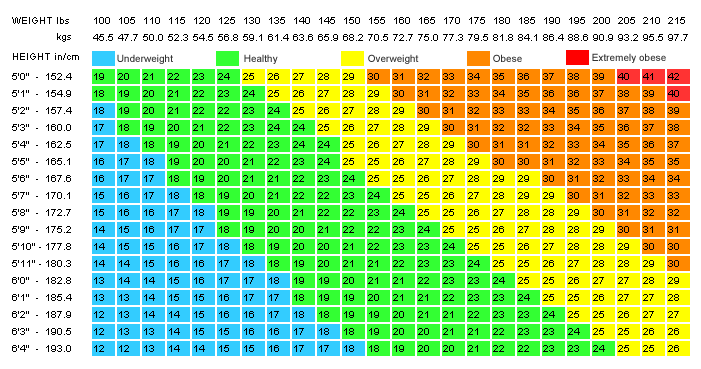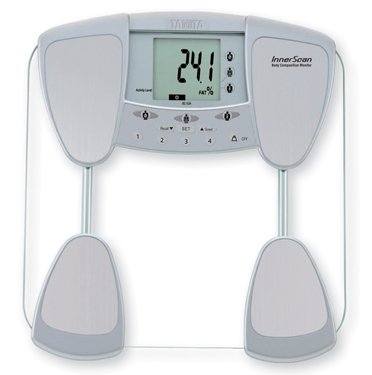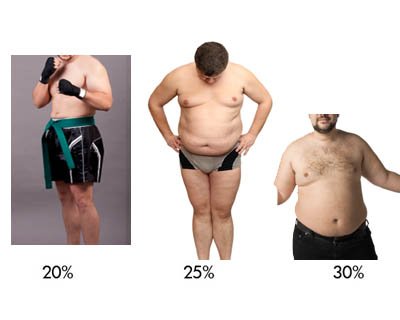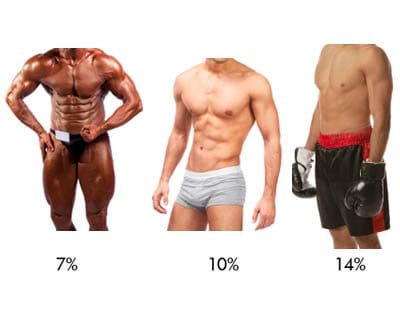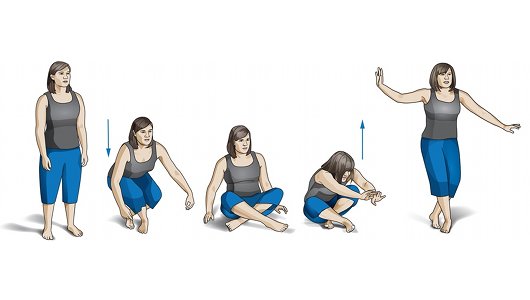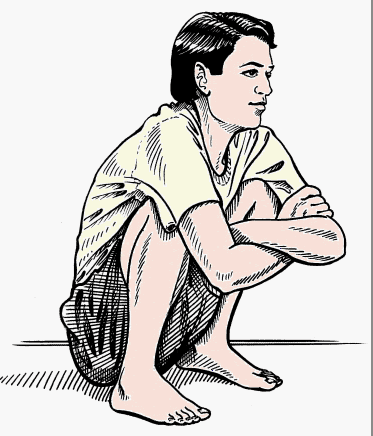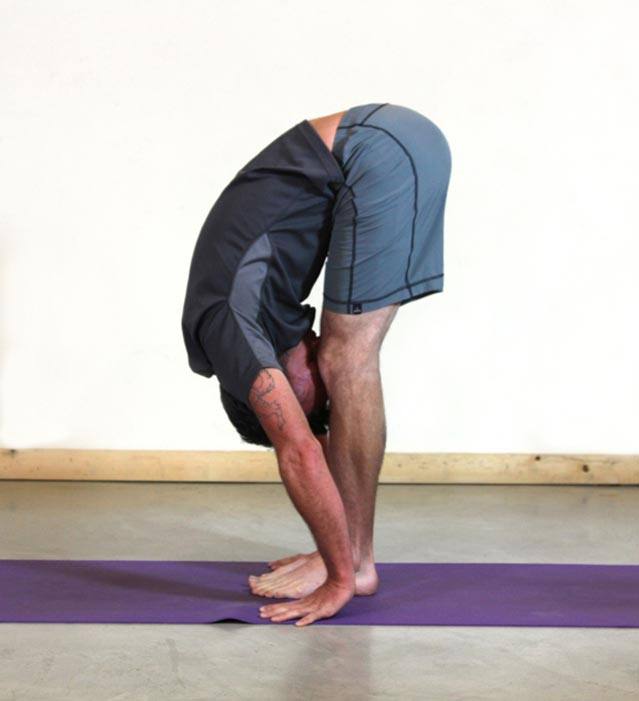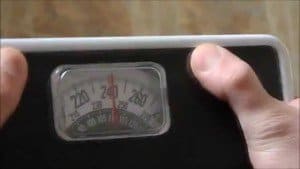How To Get Lean and Muscular, Part 1 — Measure and Track
In Part 1 of the “get lean and muscular” three-part series, we delve into how to measure and track your fitness level. Learn how to measure your body fat, strength and cardiovascular fitness.
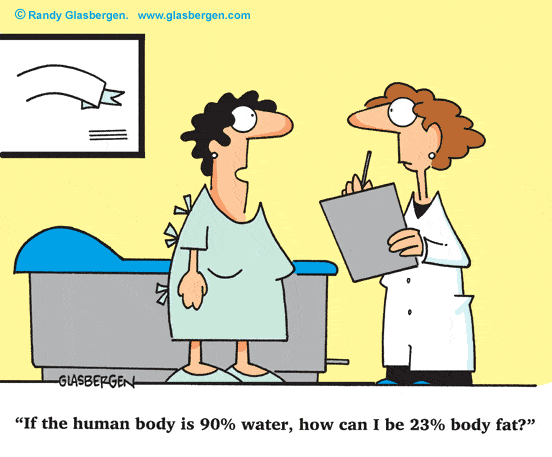 LAST WEEK I addressed the second and third choice made by those of you who took the What Do You Want To Improve? survey. Now, I’ll address the #1 thing.
LAST WEEK I addressed the second and third choice made by those of you who took the What Do You Want To Improve? survey. Now, I’ll address the #1 thing.
Let me explain.
As it now stands, 27.4% of you selected either I want to learn new, empowering lifestyle habits or I want my life to be guided by focused intention from the list of 12 offered. These two choices are pretty similar. What their selection says to me is that the majority of survey respondents want to have conscious control over their life so they can create what they want.
Hence, last week I wrote an article about how to develop a goals-making system entitled, How To Use The Panda Planner To Achieve Your Goals that you can apply to get what you want. I likened it to asking the genie that pops from Aladdin’s lamp to grant you the wish of being the genie yourself.
With that power, you can create whatever else you want. Once you learn how to intentionally create the life you want, you become your own genie. So, last week we took a look at how to accomplish that. In this article, we’ll turn to the the #1 most chosen selection from the list :
I want to become leaner and more muscular.
Your objective, if you’re so inclined, is to grab whichever information presented below that you’re willing to use in your quest to become learner and more muscular, and then use the goals-making approach offered in last week’s article to make it happen.
This is Part 1 of a three-part series, and the focus is on how to measure your body fat and fitness. Part 2 will be about various types of exercise, which I refer to as “move”. Part 3 will be what food, drink, superfoods and supplements to take to support your body’s transformation, which I refer to as “fuel”.
In this article, you’ll discover:
- Why you must measure in order to manage improvements in body composition;
- Three methods you can use by yourself to measure your body fat percentage;
- Four ways to assess your flexibility/mobility;
- Five strength measurements; and
- A simple, straightforward method for determining your cardiovascular fitness.
Let’s dig in…
You Can’t Manage What You Don’t Measure
The first thing to do before you leap into some effort to change or create something is to know in concrete terms where you’re starting from.
To lose body fat and gain muscle requires a program of specific food, drink, supplementation, exercise and a “can do” mindset. These need to be tracked and measured to some degree, and you begin at the beginning my testing and/or measuring your current body fat, strength, flexibility and endurance.
Notice I didn’t mention to measure the size of your various body parts, such chest, arms, waist, thighs, etc. Surely you could do all this, but I say let the mirror be your guide, as you’ll see in a moment.
Before we get into all the things you could consider measuring in order to track how you’re doing with your get lean and muscular goal, just exactly what is the goal, specifically? Meaning, just how lean and muscular so you want to get, as measured by body fat, how your clothes fit, or muscle size?
How far you go is up to you, and incidentally, is typically related to where you’re starting from. Be realistic or you’ll get frustrated and quit.
Measure Your Body Fat
The most accurate way to do this is with a DEXA (Dual-Energy X-Ray Absorptiometry) which exposes you to X-ray beams of differing intensities that can measure body composition (fat, muscle, bone). It’s expensive and unavailable, as are many of the most accurate methods to measure body fat. (See these.)
There are, however, three very available and adequately accurate ways to measure body fat:
- An equation,
- A body fat measuring scale, and
- Your mirror.
Each of these three ways to measure body fat are estimations, but deemed to be fairly accurate. Their primary value isn’t that they can give you an absolutely definitive body fat percentage, but that over time you can track how much body fat you’re losing (or gaining) relative to the beginning number.
Why not simply look up your BMI on a chart?
Well, grasshopper, BMI is very inaccurate simply because it can’t distinguish the weight between fat and muscle.
My buddy Lance is a good example.
Lance is 5’10” tall and weight about 205 pounds. The BMI chart would estimate Lance’s BMI at 29, well within the “overweight” category. But Lance is not overweight by any means. He eats for nourishment, not for entertainment, and lifts weights six times per week. Lance is all muscle, but the BMI thinks he’s fat and overweight.
BMI wrongly says that I’m overweight as well. (Hope springs eternal.) I’m 6’4″ (almost) and weigh 207 pounds, putting me in the overweight category along with Lance, at about 25. This is less overweight than Lance’s number (29) and yet he’s less fat than I am.
Having said all that about how BMI can be inaccurate, it is widely used because it is a useful measurement for weight characterization (underweight, healthy weight, overweight, obese, extremely obese) for people who are not very short, tall and/or muscular.
If your curious about your BMI, just type in your info in the BMI calculation widget below and see what it is:
Let’s turn to math.
The military uses an equation to estimate how fat the troops are. It’s a quick and useful way to measure your body fat, approximately, and track it — but you need to know how to use Excel or Google Sheets, or have a scientific calculator with logarithmic functions. If you do, plug in one of these equations, given your gender:
Men: % body fat = 86.010 x log10(abdomen – neck) – 70.041 x log10(height) + 36.76
Women: % body fat = 163.205 x log10(waist + hip – neck) – 97.684 x log10(height) – 78.387
Another equation that does the job with basic math is presented by Hugo Rivera on famous bodybuilder Dave Draper’s website.
Men
- (Body weight (pounds) x 1.082) + 94.42 = A
- Waist girth (across navel) x 4.15 = B
- A – B = C (your lean body weight)
- Body weight – C = D
- D x 100 = E
- E / Body weight = Your Percent Body Fat
Let’s use my metrics as an example:
- (207 pounds x 1.082) + 94.42 = 318.39 (A)
- 37 inches x 4.15 = 149.85 (B)
- 318.39 – 149.85 = 168.54 (C)
- 207 – 168.54 = 38.46 (D)
- 38.46 x 100 = 3,846 (E)
- 3,846 / 207 = 18.57%, my body fat percentage. (Good grief!)
The military equation provides me a slightly different result. Using Google Sheets to do the calculation results in a body fat percentage of 17.85, nearly one point lower. (Boy do I love logarithms!)
Women
As usual, women are more complicated. 🙂
You gals need to measure more body parts.
| Women’s Body Fat Formula | Formula applied to a 150 Pound Woman |
| Body weight (pounds) x 0.732 = A | 150 lbs x 0.732 = 109.8 (A) |
| 8.987 + A = B | 8.987 + 109.8 = 118.787 (B) |
| Wrist circumference / 3.14 = C | 7 inches / 3.14 = 2.229 (C) |
| Waist measurement x 0.157 = D | 36 inches x 0.157 = 5.652 (D) |
| Hip measurement x 0.249 = E | 40 inches x 0.249 = 9.96 (E) |
| Forearm measurement x 0.434 = F | 11 inches x 0.434 = 4.774 (F) |
| B + C = G | 118.787 + 2.229 = 121.016 (G) |
| G – D = H | 121.016 – 5.652 = 115.364 (H) |
| H – E = I | 115.364 – 9.96 = 105.404 (I) |
| F + I = J, your lean body mass at zero fat | 4.774 + 105.404 = 110.178 lbs
at zero body fat (J) |
| Body weight – J = K | 150 lbs – 100.178 lbs = 49.822 lbs of body fat (K) |
| K x 100 = L | 49.822 x 100 = 4,982.2 (L) |
| L / Body weight = your body fat percentage. | 4,982.2 / 150 = 33.21% body fat |
Note: It’s important to measure your body parts accurately:
- Neck: at the base, the biggest part
- Wrist: Around the wrist bone
- Forearm: Around the biggest part
- Waist: Around the navel (you can suck it in)
- Hips: Around the widest part
If tape measures and math ain’t your thing and you have a few extra bucks lying around, you could buy a body fat calculating scale.
I use a a Tanita BC534 Glass InnerScan Body Composition Monitor, but there might be better ones available. Check out the body fat scales on Amazon.com and see which get the best ratings.
These types of scales measure fat by a technique called Bioelectrical Impedance Analysis.
It’s true that, like the equations, body fat scales do not provide the most accuracy, but as I mentioned earlier, what’s more important than knowing absolutely what you body fat percentage is, is to know if it’s dropping as you apply yourself to this achievement. The body fat scales will accurately indicate if you’re losing body fat.
The last way to measure your body fat that I want to cover here is the mirror.
You mirror never lies, but your interpretation of what you see might.
To aide you in your honesty, grab a friend who you’re not shy being mostly naked around, get mostly naked, stand him/her in front of a mirror and ask:
Which one of these pictures do I look the most like?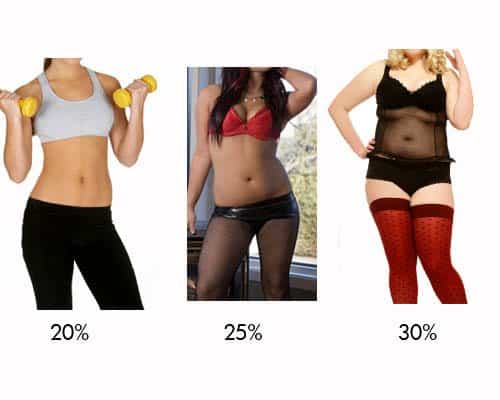
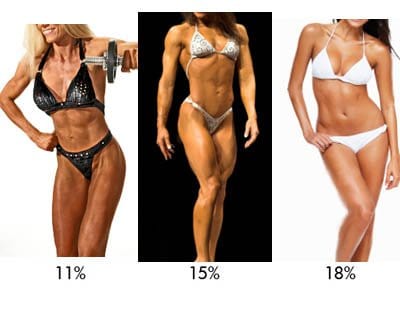
Measure Your Flexibility
Watch a 90-minute yoga class and you’ll observe a hundred ways to test flexibility. Let’s just choose three:
- Sitting-Rising Test,
- Peasant Squat, and
- Bending.
The Sitting-Rising Test has an uncanny way of predicting when you’ll die. A Brazilian Study determined this:
- How well you can sit and rise from the floor, without using assistance from your hands, knees or other body parts, may predict your risk of dying prematurely in the next six years.
- Those who scored the lowest, requiring the most assistance to sit and rise from the floor, were 6.5 times more likely to die during the study period than those who scored the highest.
Here’s an illustration of how to do it, and below that, a video. (Yes, children can easily do it.)
The Peasant Squat is a pretty common way of sitting and eating in various indigenous communities around the world where people’s bodies haven’t been ruined by chairs. It looks like this:
Finally, measure your flexibility by standing straight up, legs together and see how far you can bend forward, side to side and backward.
Measure Your Strength
As with flexibility, there’s many ways to measure strength, but we’ll keep it simple with two tests for upper body strength, two for lower body strength and one for grip strength:
- Upper body pull: Pull-ups
- Upper body push: Push-ups
- Lower body pull: Dead lift
- Lower body push: Squat
- Hand gripe: Bar hang
I’ll speak to how to do exercises associated with these tests below in Part 2. But while your here reading about measuring things, a word on how to know if your strength level with the five movements listed above is good or bad.
Answer: You determine what level of strength is good or bad relative to your objectives.
I’ll suggest some standard strength metrics for each of the five movements, but they’re associated with men and women who are not encumbered by illness or the vagaries of aging. You need to decide how strong you’d like to be, and three big determinants of that are:
- How you envision yourself,
- What you’re willing to do, and
- Where you’re at now.
Now, let’s take a look at each of the five movements you can do to measure strength.
The pull-up is the best way to measure upper body pulling strength simply because if you’re firing on all cylinders, a human body should be able to hang from a bar and pull itself up to it so that the chin touches the bar.
Ten pull-ups is good for a man, depending on his age, weight and arm length. Three for a woman. What really matters, though is where you’re starting from. If you can’t do one, you can help yourself up by stepping on a chair, bringing your chin to the bar while using your legs as an assist, and then slowly lowering yourself without the aide of your legs.
Push-ups measure pushing strength. Again, depending on your circumstances a man should be able to do 20 and a woman seven. If you can’t do a regular push-up, you can put your lower weight on your knees rather than your feet, or do them against a wall.
The dead lift is a very good test of overall body strength given all the muscles incorporated in the lift. Form is of paramount importance. If you combine an unexercised back, tight hamstrings and hips along with bad form, you will get injured.
Both men and women should be able to lift their own body weight off the floor, but don’t run off and try it if you’re unaccustomed to lifting heavy stuff off the floor.
The squat measures leg strength, though if you’re inflexible you might not be able to squat fully, where your butt nearly touched your heels. Men should be able to free squat (holding no weight) 40 times and women, 30.
Finally, grip strength is a very important measurement because it’s related to mortality.
Data analysis of a Prospective Urban Rural Epidemiology study of 139,691 adults aged 35 to 70 showed that every 5 kg (11 pounds) of declining grip strength was associated with a 16% increase in death from any cause, a 17% greater risk of cardiovascular death, and a 17% higher risk of non-cardiovascular mortality.
The study authors report that:
This study suggests that measurement of grip strength is a simple, inexpensive risk-stratifying method for all-cause death, cardiovascular death, and cardiovascular disease.
A hand dynamometer is typically used to perform the hand grip test, but you can also use a body weight scale (although it’s less accurate) for which there are two methods:
- Method 1– Stand on the scale and measure your body weight. Next, grab someplace you can hang from (a bar or hang board) and, without bending your elbows and not using any part of your body other than your hands, tense your hands and pull up as much of your weight as possible for five seconds. Record what the scale says for the five seconds you’re tensing your hands. How much you weigh minus how much you weigh while tensing your hands equals your grip strength in pounds or kilograms.
- Method 2 – Grab a scale with both hands and extend your arms out in front of you so that the scale is about at chest level. Squeeze with all your might and record the highest mark the scale indicates. Here’s a pic of me doing that:
I’m not sure about how much weight you should be able to squeeze. I’m squeezing a bit more than my body weight in the pic above, which is good, but I don’t know what would be a “bad” weight to squeeze on the scale. What I do know is that you should be able to grab a pull-up bar, or some such, and be able to hold yourself swinging in the wind for at least a minute for men, and 3o seconds for women.
Measure Your Endurance
Endurance is the ability to sustain a prolonged stressful effort or activity.
Well, how long is “prolonged”, what’s the “activity” and at what level will it be “sustained”?
Certainly, measurements of endurance is different specific to running, climbing stairs, biking, rowing, etc, but one common denominator is your heart rate (or pulse). I was scratching my head trying to figure out which of the many endurance tests I could tell you about, and finally turned to Google to help me out. There I found some answers to the question, “How do I measure cardiovascular fitness?”
I like Pamela Fortner’s answer, which basically says this:
Perform a 3 min step test by stepping 24 steps per minute on an 18 inch step or platform. Step for total of 3 minutes or roughly 72 steps. Wait one minute then measure your pulse for 30 sec. Record that number as your recovery pulse.
Determine your fitness level by:
Duration of exercise (seconds) x 100 divided by recovery pulse x 5.6 = cardiovascular efficiency. Then compare your score to these categories:
28-38 poor
39-48 fair
49-59 average
60-70 good
71-100 very good
Again, as I’ve said already, what’s “good” for you is relative to you. If you’re unhappy with your result, you’ll hafta move more, which is the topic of the next section of this article. But before that, I want to say something more about pulse.
In my article, Three Easy Ways To Predict Your Lifespan In 10 Minutes, I wrote that:
After controlling for physical fitness and other health and behavioral factors, they [a Danish study] found that the higher the resting heart rate, the greater the risk for death.
Compared with men with rates of 50 beats a minute or less, those at 71 to 80 beats had a 51 percent greater risk. At 81 to 90 beats, the rate of death was doubled, and over 90 it was tripled.
People with resting pulses of 80 beats per minute die four to five years earlier than those with pulses of 65 beats per minute.
Improving your endurance will lower your resting heart rate. This will not only make you more fit, but may prolong your life.
Your Takeaway
To get lean and muscular, remember these four things before you start your program:
- Before you begin a journey, know where you’re starting from — so go test and measure yourself as described above.
- Continue to test yourself on a regular basis so you can manage your progress; meaning, adjust what you’re doing so that the outcome you want is more assured.
- The only important test result is the one you can accept — if you’re a 55 year-old women who hasn’t been struck by the Crossfit lighting bolt, forget about doing three unassisted pull-ups.
- If you need help on goal making click here and read up.
Next week I’ll publish Part 2 on this lean and muscular topic, where the focus will be on how to move your body.
Yep, that means exercise.
Stay tuned.
UPDATE –> Go Read Part 2
Extra Credit: click here to read more about measuring your health.
Last Updated on February 7, 2024 by Joe Garma

